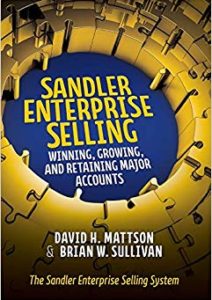A midsummer night’s dream. Not Shakespeare’s, though, but the sales manager’s dream of the second half of the calendar year so strong that it drives the numbers up, salvaging the year and ensuring robust performance. Dreaming aside, H1 has been filled with many positives and negatives but your sales optimism tells you that there’s plenty of time left before the ball drops in Times Square. Time to accelerate your team’s improvement. Time to close strong. Time to hit your year-end numbers. There’s still time.
Your dream takes you back to January and that SWOT analysis you led with your team – the traditional process that assesses those four well-known categories:
Strengths: The internal characteristics, providing you a clear advantage.
Weaknesses: The internal attributes placing you at a disadvantage and limiting your team’s ability to achieve goals.
Opportunities: The positive external factors that increase your chances of success.
Threats: The negative external factors jeopardizing your success and increasing your vulnerability.
You remember, don’t you? And maybe you’re lucky to be part of an enlightened organization that integrated your SWOT findings into practical plans to guide your progress, helping your team be at 150% of the plan at this point in the year. Or maybe not. If your sales organization is like most, those SWOT results were quickly dismissed by a team laser-focused on breaking out of the January selling gate fast. The SWOT flip charts filled with great ideas were rolled up and are now collecting dust in the storage room.
But, at this point, there’s still time. Time to maximize strengths, shore up weaknesses, take advantage of opportunities and defend against threats. How? By revisiting traditional SWOT? No. By raising it to a new, actionable level.
With your earlier SWOT findings already in place as the baseline, refresh them with the lessons learned from H1. You can’t get a re-do on those months passed, but you can learn from them. Experience, as we know, is the best teacher. And recent experience is even better. Of course, you’ll identify some new items to add that didn’t come up previously, but your initial work will save you lots of time. And just in case, if in the interest of starting strong, you never did conduct that SWOT session, now is the time. Not, though, through traditional SWOT and its documentation focus. With half the year gone, that’s not good enough. You need a forward motion to bring SWOT to life with concrete actions to drive real acceleration. To ensure a meaningful impact on your H2 numbers, you have to act now.
In Sandler Enterprise Selling, we accomplish this with “SWOT Accelerator”. It’s a simple concept, really, like most of selling’s best practices. And it’s easily replicated – light on theory, heavy on action. In the first step, we improve on traditional SWOT’s output, which we call the “Build Step”. Then, we create defined actions for each identified SWOT item through the “Action Step”, where each item is enhanced through these four critical areas:
- Action: The principal action to drive improvement.
The outline of a plan, a template, or other type of initial progress, dictating real movement, strategy, and action. - Impact: The effect of the achievement of the results of the action.
Team discussion and consensus determine the expected impact – high, medium or low, in the context of your business model. - Accountability: The person accountable for making the action happen.
Several individuals play roles in driving actions, but it’s vital to identify one specifically accountable person. In Sandler Enterprise Selling, we use the popular RACI system to illustrate the clear responsibilities of each person engaged:
R = Responsible – The people who perform the work to get the job done.
A = Accountable – The one person specifically and ultimately accountable.
C = Consulted – The people whose counsel is sought and with whom two-way communication flows.
I = Informed – Those simply kept informed of status and progress. While their input is always welcome, it’s not required. - Date: The date by which the action is to be completed.
The realistic date the action will be implemented.
With this second step completed for all identified strengths, weaknesses, opportunities and threats, the actions are then listed by both impact level and date, generating a prioritized schedule for attacking the most productive actions first, maximizing improvement in the remaining time.
And if you’re thinking that this process of raising SWOT to impactful and actionable levels would deliver value in other types of initiatives as well, you’re right. Truthfully, it’s hard to find situations where it doesn’t. But with the golden opportunity to accelerate H2 sales, SWOT Accelerator provides a powerful path to real improvement that benefits the entire organization. Remember, there’s still time.











Comments (11)
Well said! It is indeed about time.
Articualted! SWOT Analysis is Non-Negotiable. There is surely enough time to break even!
It’s very Insightful. Undoubtedly, SWOT Analysis is a general technique that provides amazing results.
Right on point.
This is cool swat is the way
Fantastic
Well said there is still time to populate the uniqueness of crm pipeline
What a great article! Time is always available.. to get amazing sales results.
Well said about time.
Motivational..
Nice thanks for the encouragement